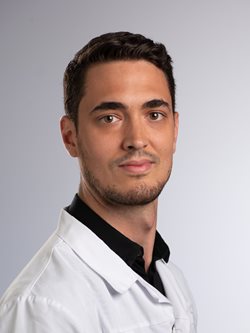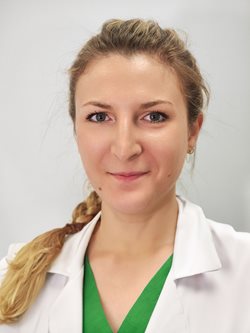ESTRO 2024 Congress report
10 years of research in FLASH radiotherapy
In 2024, Favaudon et al. published a seminal paper on “FLASH” radiotherapy, that (re)-described the response of normal tissues to ultra-high dose rate (UHDR) irradiation in preclinical models. The possibility to maintain an efficacious anti-tumour effect while protecting the surrounding normal tissues was coined the “FLASH effect”.
In her teaching lecture, Prof. Marie-Catherine Vozenin highlighted the impact FLASH radiotherapy had on the radiation oncology field over the last 10 years and the challenges it has raised in all disciplines. Despite more than forty articles showing the superiority of FLASH-RT against conventional dose rate radiotherapy on normal tissue toxicity, on preclinical models and in veterinary clinical trials, no unifying mechanisms can so far explain the FLASH effect. Research is ongoing to decipher the complex interactions between UHDR and biological tissues: from the rise and fall of the oxygen depletion hypothesis to the implication of the immune system, protection of normal stem cells, metabolic or genetic differences, and radiochemistry-related mechanisms. Nevertheless, it highlights the complexity of radiation response, not only depending on the dose, volume, fractionation, organ and inter-individual variations, but also on the dose rate, a new parameter to take into consideration. About the tumour treatment, many other questions still need to be answered: is FLASH-RT always as efficacious as conventional dose rate RT to eradicate tumours? Can we fractionate the dose? Is it compatible with other cancer treatments?
While clinical translation is ongoing, it stays limited by the available technology. Delivering UHDR beams in the optimal conditions to offer patients a safe and efficacious treatment will still require a lot of research on the importance of each beam parameter, but also the development of new machines, new dosimetric tools, treatment planning systems and models, limiting, for now, the range of application of FLASH-RT on human patients.

Pierre Montay-Gruel, PhD, radiobiologist. AReRO-CORE, Iridium Netwerk and University of Antwerp, Belgium. pierre.montaygruel@zas.be, https://www.linkedin.com/in/pmontayg/
Multidisciplinary and physics highlights in FLASH
FLASH radiotherapy is currently on the way to clinical transfer thanks to multidisciplinary efforts. The ESTRO 2024 annual meeting emphasised the latest breakthrough on this topic. Regarding medical physics and technology, the development of new UHDR clinical accelerators and suitable dosimeters are the two main subjects discussed during the congress. Providing access to beamlines and enabling clinical trials as well as controlling the physical parameters involved in the FLASH effect are crucial. In this scope, promising active dosimeters were presented for electron and proton beams: plastic scintillator sheets (Matteo Morrocchi), optical fibres (Joseph Bateman), inorganic scintillators for preclinical in vivo dosimetry (Sky Rohrer), design of small gap ionisation chambers (Kevin Liu) and SiC detector for beam monitoring (Giuliana Miluzzo). In addition, passive OSL sheets and real-time scintillator were also investigated (Verdi Vanreusel) in electron beams. In order to compare the existing studies, Aylward (Jack) proposed the harmonisation of definitions and terminology to specify UHDR beams. Finally, on the introduction of FLASH radiotherapy in the clinic, the projects introduced during the meeting focus on electron beams. In fact, Duclos (Frédéric) presented the participation of radiotherapy technologists (RTTs) to the CHUV projects: an ongoing clinical trial on skin cancer with high energy electrons (IMpulse) and installation of a VHEE (very high energy electrons) accelerator in the coming years. Before a European clinical trial, the dosimetric performances of a dedicated high-energy electron UHDR linac were also presented (Julie Colnot).

Julie Colnot, PhD, medical physicist, Gustave Roussy / THERYQ, julie.colnot@gustaveroussy.fr (https://www.linkedin.com/in/julie-colnot-073649130/)